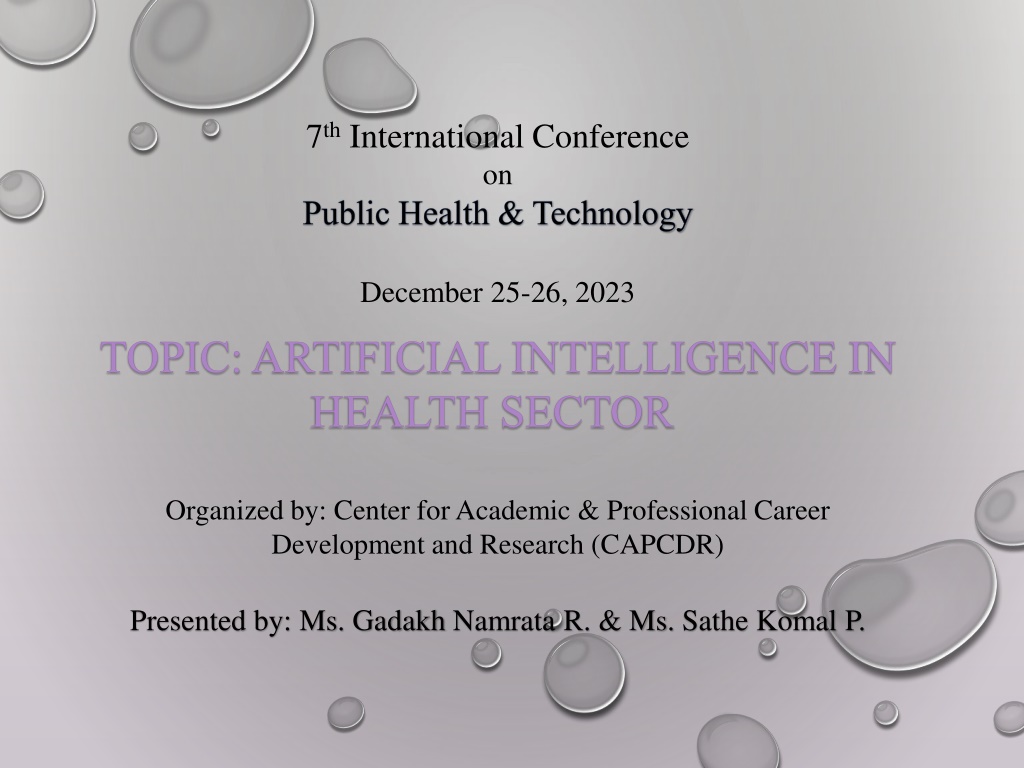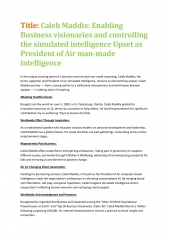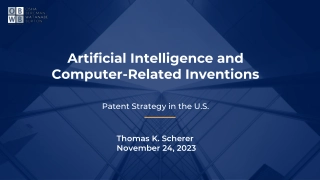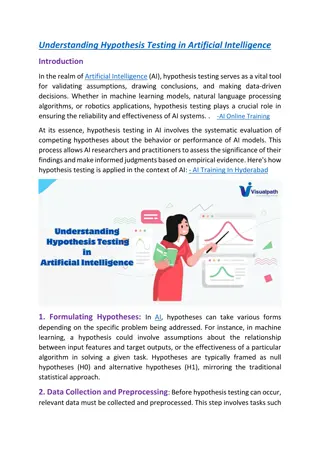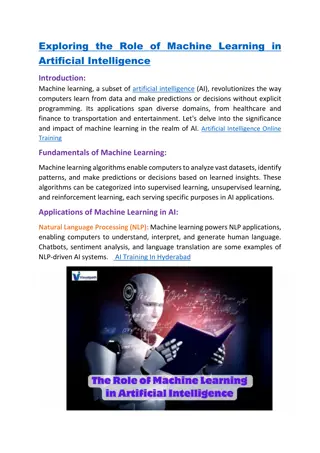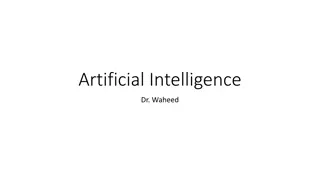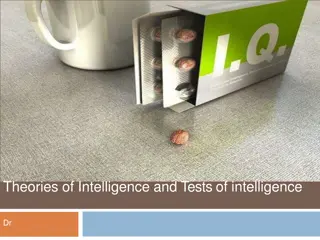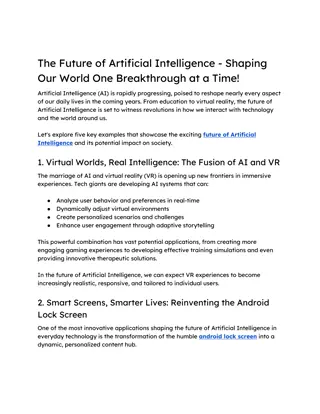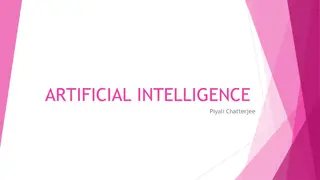TOPIC: ARTIFICIAL INTELLIGENCE IN HEALTH SECTOR
Artificial intelligence (AI) is revolutionizing the healthcare sector, enabling intelligent machines to anticipate and address medical issues for more effective patient care. From real-world drug research to clinical decision support, AI technology is making significant strides in improving healthcare outcomes. Machine learning and deep learning techniques are advancing the capabilities of AI systems, allowing for innovative applications such as natural language processing in healthcare settings. Explore the evolving landscape of AI in healthcare and its profound impact on the industry.
Download Presentation

Please find below an Image/Link to download the presentation.
The content on the website is provided AS IS for your information and personal use only. It may not be sold, licensed, or shared on other websites without obtaining consent from the author.If you encounter any issues during the download, it is possible that the publisher has removed the file from their server.
You are allowed to download the files provided on this website for personal or commercial use, subject to the condition that they are used lawfully. All files are the property of their respective owners.
The content on the website is provided AS IS for your information and personal use only. It may not be sold, licensed, or shared on other websites without obtaining consent from the author.
E N D
Presentation Transcript
7th International Conference on Public Health & Technology December 25-26, 2023 TOPIC: ARTIFICIAL INTELLIGENCE IN HEALTH SECTOR Organized by: Center for Academic & Professional Career Development and Research (CAPCDR) Presented by: Ms. Gadakh Namrata R. & Ms. Sathe Komal P.
What is Artificial Intelligence (AI)? In simple terms, artificial intelligence (AI) is the science and engineering of creating intelligent machines by programming them to follow an algorithm or set of rules that simulate cognitive processes like learning and problem solving. Artificial intelligence (AI) systems are capable of anticipating problems or addressing them as they arise, allowing them to function in a deliberate, intelligent, and adaptable way. AI systems have the ability to convert a patient's whole medical record into a single number that indicates a probable diagnosis.
Artificial Intelligence And Healthcare It is clear that artificial intelligence (AI) is starting to impact nearly every facet of healthcare, including real-world drug research, patient self-management of chronic illnesses at home, and clinical decision support at points of care. However, the creation and application of AI technology is difficult and expensive.
The Evolution of Machine Learning And Artificial Intelligence Machine Learning It is the computer-assisted application of statistical models to data. A wider range of statistical methods are employed in machine learning than are commonly found in medicine. Deep Learning Using deep learning techniques, a machine can be trained with vast amounts of unprocessed data and trained to find the representations required for classification or detection.
Supervised learning Training computer programs to analyse outputs of interest that are defined by a supervisor (usually a human) in order to discover associations between inputs and outputs in data. Unsupervised learning It includes computer programs that learn associations in data without external definition of associations of interest. Learning by Reinforcement Actions are taught by computer programs according to how well they can maximize a predetermined reward. This strategy, which draws inspiration from behavioural psychology, has been used to great effect in the gaming industry, where there is an abundance of options, perfect data, and no real-world cost associated with failure.
AI Applications in Health Care 1. Natural language processing Natural language processing is the automated analysis and representation of human languages, primarily in text format, using computational techniques. 2. Artificial intelligence voice technology and assistants The most logical, instinctive, and common way for people to communicate is through voice. Voice technology is being used extensively in a number of industries, including healthcare, to help with information challenges that patients and healthcare providers may encounter. It appears that text-based chatbots like Babylon, Ada, and Buoy have been more successful commercially because they are more dependable
3. Medical Robotics All of the previously discussed AI technologies are demonstrated by medical robots. Medical robots can support a variety of tasks, including assisted living, social interaction, surgery, and rehabilitation. AI-assisted surgical robots, which can evaluate information from preoperative health records to physically guide a surgeon's instrument in real time during a procedure, are among the most widely used medical robots.
CONCLUSION Researchers and medical professionals are paying attention to artificial intelligence (AI) in the healthcare industry. AI research and machine learning systems are able to forecast the difficult circumstances facing the pharmacy sector. It contributes to India's declining mortality rate. It is anticipated that these technologies will help medical professionals make better treatment decisions by supporting them in the process. However, there are currently a number of privacy, dependability, safety, and liability concerns with AI-based health care technologies. In addition to technical breakthroughs, raising public awareness of AI, creating uniform standards, and making methodical advancements will be necessary in the future for artificial intelligence (AI) technologies to be used more extensively in healthcare.
REFERENCES 1. Shukla SS, Jaiswal V. Applicability of artificial intelligence in different fields of life. IJSER 2013;1:28 35. [Google Scholar] 2. Deng J, Dong W, Socher R, et al.. Imagenet: a large-scale hierarchical image database. 2009 IEEE Conference on Computer Vision and Pattern Recognition 2009:248 55. [Google Scholar] 3. Quinn TP, Senadeera M, Jacobs S, Coghlan S, Le V. Trust and medical AI: the challenges we face and the expertise needed to overcome them. J Am Med Inform Assoc 2021;28:890 4. [PMC free article] [PubMed] [Google Scholar] 4. Berwick DM, Nolan TW, Whittington J. The Triple Aim: Care, health, and cost. Health Affairs 2008;27:759 69. [PubMed] [Google Scholar] 5. Bodenheimer T, Sinsky C. From triple to quadruple aim: care of the patient requires care of the provider. Ann Fam Med 2014;12:573 [PMC free article] [PubMed] [Google Scholar] 6. Feeley D. The Triple Aim or the Quadruple Aim? Four Points to Help Set Your Strategy. Institute for Healthcare Improvement, 2017.
